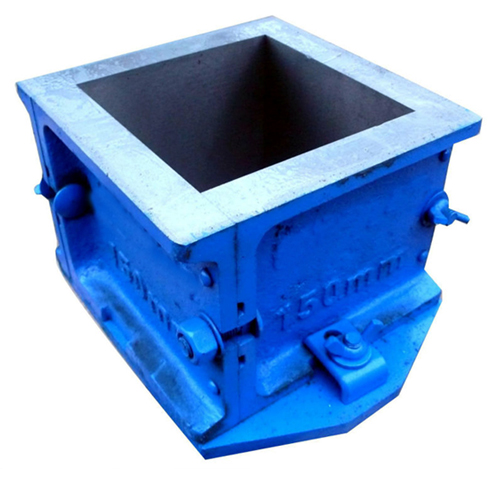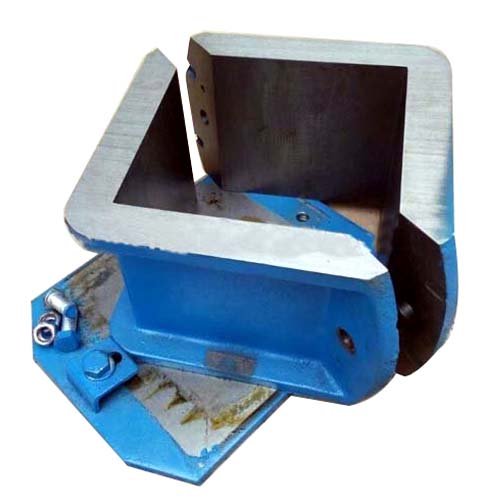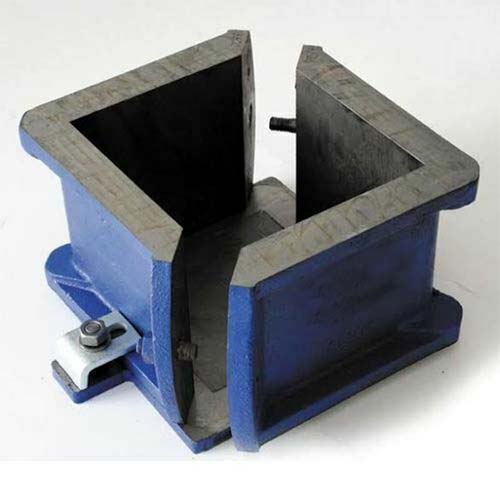




Cube Mould (Two Part) V Shape
Model No.: SET-1118 (A)
Standards:
Civil Lab Equipment Manufacturer Cube Mould Two Part V Shape is manufacturers as per the industry defined standards. Cube Mould (Two Part) V Shape are the commonly required in the laboratory.
manufacturing Cube Moulds as per international standards (BS and IS). SETEST cube moulds are available in different sizes with difference standards. For the metric size cube mould, the faces are machined flat to +/-0.2mm accuracy and finished to within 0.2mm. For the inch size moulds, the faces are machined flat to +/-0.01 inched to within 0.01in. All cube moulds are supplied complete with the base plate.
a. Cube Mould (Cast Iron – for Mortar) 50mm, Single Gang
b. Cube Mould (Cast Iron – for Mortar) 50mm, Three Gang
c. Cube Mould (Mild Steel – for Cement) 70.6mm, with Loose Base Plate
d. Cube Mould (Cast Iron – for Concrete) 75mm Single Gang
e. Cube Mould (Cast Iron – for Concrete) 100mm Light Weight
f. Cube Mould (Cast Iron – for Concrete) 100mm Clamp Type (8.5 KG) Four-Part
g. Cube Mould (Cast Iron – for Concrete) 150mm ISI Marked
h. Cube Mould (Cast Iron -for Concrete) 150mm Clamp Type (16 KG) Four-Part
i. Cube Mould (Cast Iron – for Concrete) 150mm Clamp Type (16 KG) Two-Part
Apart from Cast Iron and Mild Steel Cube Moulds, manufactures Plastic and Polyurethane Cube Moulds. manufactures Plastic and Polyurethane Cube Moulds.
More information on Plastic & Polyurethane cube moulds is available at: Plastic Cube Mould.
How to determine the compressive strength of concrete using Cube Moulds.
To determine the compressive strength of concrete, 6 concrete samples are prepared using cube mould. Freshly prepared concrete is poured into 6 cube moulds and is kept for curing for 7 & 28 days. The preferred size of concrete cube used in concrete testing is 150mm x 150mm x 150mm. On 7th day, 3 concrete samples are extracted from their respective cube moulds and compression test is performed using compression machine. A similar process is repeated on 28th day with remaing 3 concrete cubes.
When the force is applied on the concrete cube specimens, concrete starts to chip off and finally the specimen cracks. The force at which the specimen fails is noted and compressive strength of concrete cube is calculated. I.e, if the specimen cracks at 500kN force and size of specimen is 150 X 150 x 150 mm, the strength of cube will be (500 x 1000) / (150 x 150) N/sq. mm
Finally, the mean of all 6 concrete cube specimens, is used as the compressive strength of concrete.
Note:
Only IS, BS or ASTM cube moulds should be used to prepare concrete samples, so as to maintain accuracy of test results.
